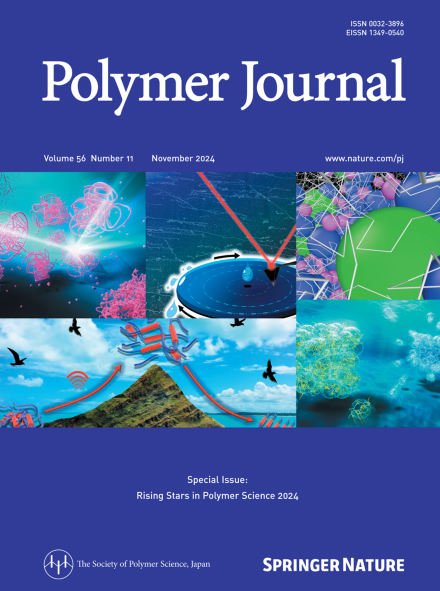用柔性整体板和环氧胶粘剂粘合金属的应力松弛和提高断裂韧性
IF 2.3
4区 化学
Q3 POLYMER SCIENCE
引用次数: 0
摘要
虽然环氧树脂具有优异的机械性能和绝缘性能,以及优异的耐热稳定性和抗化学品稳定性,但环氧胶粘剂也存在脆性和应力集中等缺点。橡胶基材料通常添加到环氧胶粘剂中以增加韧性,但它们对热和潮湿敏感,限制了它们在恶劣环境中的有效性。在本研究中,我们提出了一种新型的片状胶粘剂,由传统的液态环氧胶粘剂和内部具有连续孔隙的环氧整体片组成,利用环氧整体片的柔韧性和韧性避免应力集中的优势。我们通过在不同温度下的搭接剪切拉伸粘接试验来评估钢板型环氧胶粘剂的金属粘接强度。通过锥形双悬臂梁试验估计了总破坏能。此外,采用两种不同热膨胀系数的金属材料进行热循环粘接试验,以阐明整体片材对改善应力集中引起的界面破坏的作用。为了避免应力集中,我们提出了一种新型的片状胶粘剂,由传统的液态环氧胶粘剂和内部有连续孔的环氧整体胶粘剂组成。我们通过在不同温度下的搭接-剪切-拉伸粘接试验来评估板材型环氧胶粘剂的金属粘接强度。锥形双悬臂梁试验表明,环氧胶粘剂与整体板的组合有效地提高了总断裂能。此外,采用两种不同热膨胀系数的金属材料进行热循环粘接试验,以阐明整体片材对改善应力集中引起的界面破坏的作用。本文章由计算机程序翻译,如有差异,请以英文原文为准。

Stress relaxation and improved fracture toughness of metal bonding using flexible monolith sheets and an epoxy adhesive
While epoxy resins exhibit excellent mechanical and insulating properties as well as excellent stability against heat and chemicals, epoxy adhesives also have drawbacks such as brittleness and stress concentration. Rubber-based materials are often added to epoxy adhesives to increase toughness, but they are sensitive to heat and moisture, limiting their effectiveness in harsh environments. In this study, we propose a new sheet-type adhesive consisting of a conventional liquid epoxy adhesive and an epoxy monolith sheet with internal continuous pores, using the advantageous properties of the flexibility and toughness of the epoxy monolith to avoid stress concentration. We evaluated the adhesion strength for metal bonding using the sheet-type epoxy adhesives via a lap-shear tensile adhesion test at various temperatures. The total destruction energy was also estimated via a tapered double cantilever beam test. Furthermore, a heat cycle adhesion test was conducted using two types of metallic materials with different coefficients of thermal expansion to elucidate the effect of the monolith sheet on the improvement of interfacial failure induced by stress concentration. We propose a new sheet-type adhesive consisting of a conventional liquid epoxy adhesive and an epoxy monolith sheet with internal continuous pores to avoid stress concentration. We evaluated the adhesion strength for metal bonding using sheet-type epoxy adhesives via lap-shear tensile adhesion tests at various temperatures. The tapered double cantilever beam test revealed that the combination of the epoxy adhesive and the monolith sheet effectively increased the total fracture energy. Furthermore, a heat cycle adhesion test was conducted using two types of metallic materials with different coefficients of thermal expansion to elucidate the effect of the monolith sheet on the improvement of interfacial failure induced by stress concentration.
求助全文
通过发布文献求助,成功后即可免费获取论文全文。
去求助
来源期刊

Polymer Journal
化学-高分子科学
CiteScore
5.60
自引率
7.10%
发文量
131
审稿时长
2.5 months
期刊介绍:
Polymer Journal promotes research from all aspects of polymer science from anywhere in the world and aims to provide an integrated platform for scientific communication that assists the advancement of polymer science and related fields. The journal publishes Original Articles, Notes, Short Communications and Reviews.
Subject areas and topics of particular interest within the journal''s scope include, but are not limited to, those listed below:
Polymer synthesis and reactions
Polymer structures
Physical properties of polymers
Polymer surface and interfaces
Functional polymers
Supramolecular polymers
Self-assembled materials
Biopolymers and bio-related polymer materials
Polymer engineering.
 求助内容:
求助内容: 应助结果提醒方式:
应助结果提醒方式:


